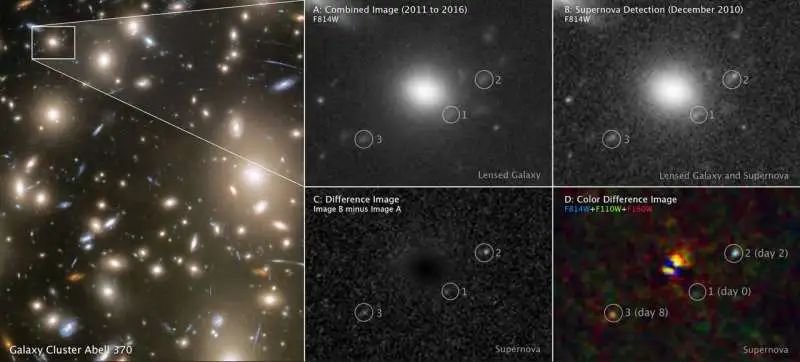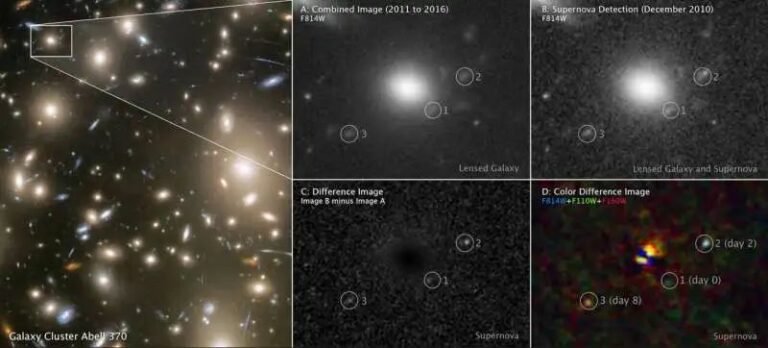
A recent article published in Nature reports observations of the early stages of a supernova (hours after the star exploded) about 11.5 billion years ago.
In a systematic search of Hubble Space Telescope archival images, scientists found images of a rapidly evolving supernova in the Abell 370 cluster of galaxies taken in December 2010.
Three of the images can be seen at the same time, but they actually show a supernova at different times under three gravitational lenses.
According to the analysis, the supernova has a redshift (a measure of the expansion of the universe) of about 3, corresponding to an event that occurred about 11.5 billion years ago.
And it is in the early stage of the supernova, which is about 6 hours after the explosion of the star.
An analysis of the brightness and color of these images shows that the rapid cooling took about 8 days .
From this, the researchers calculated that the radius of the star before it exploded was about 530 times that of the Sun.
This size is consistent with the size of a red supergiant.
This study is the first detailed observation of supernovae much earlier in the evolution of the universe and will help scientists better understand the stars and galaxies that existed in the early universe.
